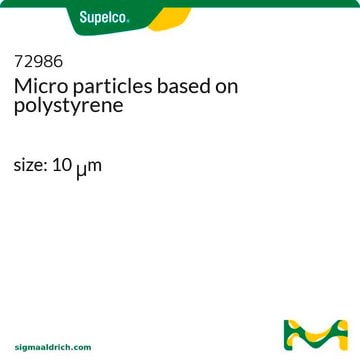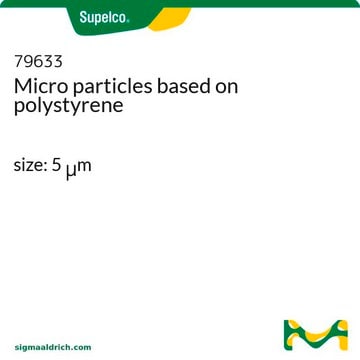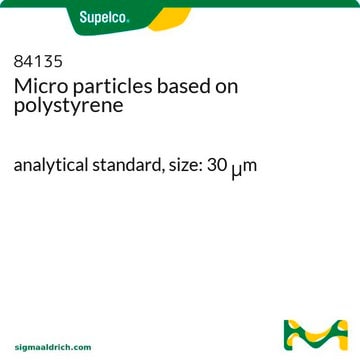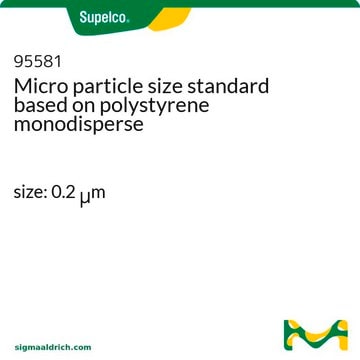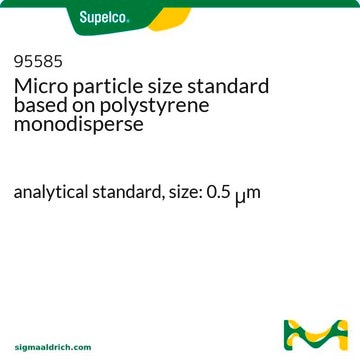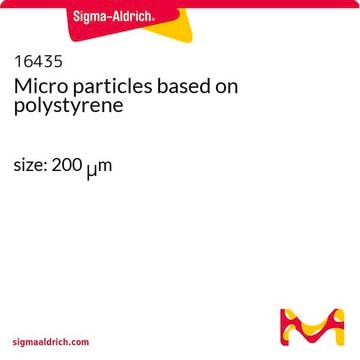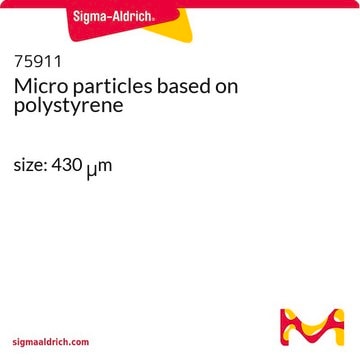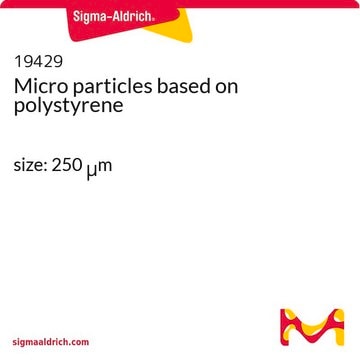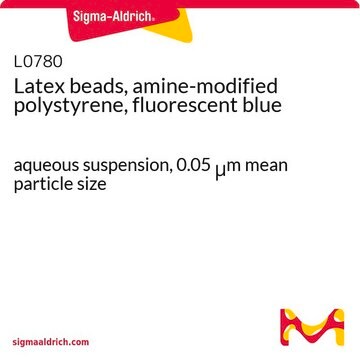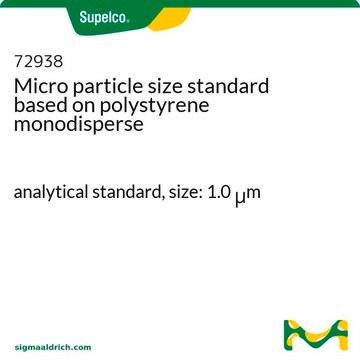The polystyrene microparticles offered for sale are not sterile.
Although autoclaving is a common method of sterilization, polystyrene microparticles are not autoclavable. Filter sterilization is also not a practical method. There are no available protocols for sterilizing polystyrene microparticles. From the remaining methods for sterilization, it should be possible to sterilize in 70% ethanol for 30 minutes and then rinse away the ethanol with sterile water. For small batches, UV radiation would be another option.
43302
Micro particles based on polystyrene
size: 100 nm
Synonyme(s) :
Latex beads from PS
Sélectionner une taille de conditionnement
287,00 €
Sélectionner une taille de conditionnement
About This Item
287,00 €
Produits recommandés
Niveau de qualité
Forme
aqueous suspension
Concentration
10% (solids)
Taille des particules
100 nm std dev ≤0.01 μm
Densité
1.05 g/cm3
Température de stockage
2-8°C
Vous recherchez des produits similaires ? Visite Guide de comparaison des produits
Catégories apparentées
Description générale
Application
- Electron Microscopy.
- Cell Counter Calibration.
- Immunodiagnostics, especially for latex agglutination tests, and
- Phagocytosis Research.
Remarque sur l'analyse
Code de la classe de stockage
10 - Combustible liquids
Classe de danger pour l'eau (WGK)
WGK 3
Point d'éclair (°F)
Not applicable
Point d'éclair (°C)
Not applicable
Équipement de protection individuelle
Eyeshields, Gloves
Faites votre choix parmi les versions les plus récentes :
Déjà en possession de ce produit ?
Retrouvez la documentation relative aux produits que vous avez récemment achetés dans la Bibliothèque de documents.
Les clients ont également consulté
-
Are the microparticles in a suspension sterile? Or is it possible to sterilize the suspension?
1 answer-
Helpful?
-
-
What kind of surface modification are performed on these particles?
1 answer-
These particles possess a negative charge and have residual sulfate end groups as a result of the manufacturing process. This is not considered to be a functional group as would a carboxyl-, aldehyde-, or amine-functionalized product.
Helpful?
-
-
Tween 20과 같은 분산제가 함께 첨가되었는지 문의드립니다.
1 answer-
Micro Particles or Latex beads are supplied in aqueous solutions composed of polymer particles with water. No surfactant has been added.
Helpful?
-
Active Filters
Notre équipe de scientifiques dispose d'une expérience dans tous les secteurs de la recherche, notamment en sciences de la vie, science des matériaux, synthèse chimique, chromatographie, analyse et dans de nombreux autres domaines..
Contacter notre Service technique